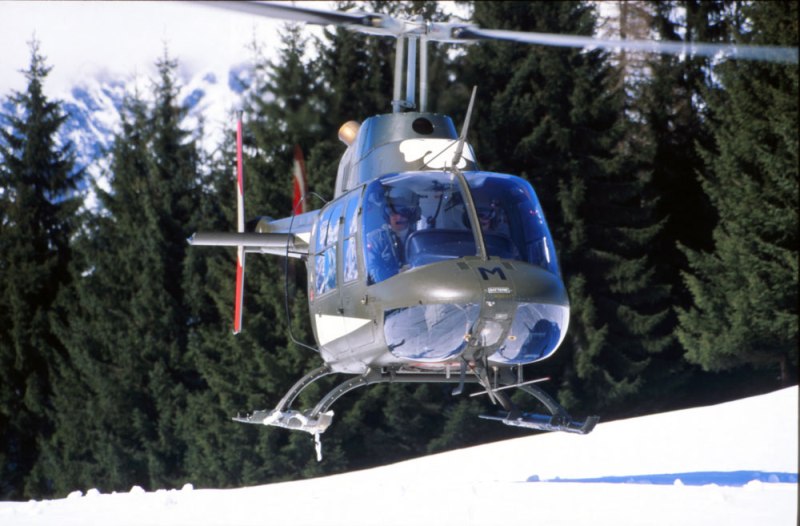|
Saalfelden, 23 March 99 during the Austrian Air force high altitude helicopter training
course,
Every year the Austrian Air force conducts high altitude helicopter training. Courses
consist of two periods of two weeks, one in the summer and the other period in wintertime. These courses are given in the mountains on several locations throughout Austria. Normally all helicopter types of the Austrian Air force are present
(OH 58, AB204, AB206 and AB212). In this course the AB204 was absent due to other commitments (the AB204 is scheduled to be phased out at the end of this year mainly due to lack of spare parts).
The courses are meant for both experienced and beginning mountain pilots. The mountain
helicopter training is one of the last steps in training an Austrian helicopter pilot to be ‘mission ready’. When entering the course, pilots should have at least 200 hours of helicopter training under their belt .
The courses are also open to pilots of other nations. Attending the course running in the
last period of March at Saalfelden in Tirol, were two pilots of the Swedish helicopter force (all Swedish helicopters are know being brought under one command structure opposed to the three different forces as before), one pilot of number 33 SQN RAF
and a pilot from the Belgian Light Aviation force from Brasschaat. Pilots are entered on the course on an exchange basis via the Austrian ministry of
defense. Past attendees think highly of the level of expertise and professionalism and the course is
probably one of the best mountain training courses in the world.
Courses are conducted on all types of helicopters of the Austrian
air force and are aimed
to introduce the pilot to the specific handling environment of high Altitude Mountain flying. This involves performing operations above the tree line, which relates to heights of six thousand feet and up.
The main part of the course is about the reduced performance rate off the
helicopter in hover, forward speed and the increased risk of blade and
tail-rotor stall. Also important factors are the physiological and psychological
phenomena associated with high altitude operations

It is of great importance to review operating limitations and performance data during
high altitude operations especially when you take into account the lower
maneuverability and the greater risk of blade stalls then on lower altitudes. So smooth and timely control are of prime importance in fully utilizing the performance
capabilities of the helicopter.
Landing site evaluation is essential when landing in area without any vegetation. Pilots
tend to estimate height higher than it actually is and to view sloping terrain as a level area. To overcome these visual illusions, pilots must learn the techniques that can be used to improve depth perception. These techniques can include natural
cues and manmade aids. Terrain features, e.g. vegetation or large rocks are the best reference. To obtain a visual reference it can be useful to drop an object or smoke grenades on the landing site. When landing on a snow covered landing site a slide
landing is necessary to avoid a "white-out "which means that the pilot has no awareness any more in with position he is hovering in respect to the landing area. Therefore a steady approach to a fixed point is essential.
Hovering above the landing site in snow covered areas is considered dangerous, as loose snow might rapidly engulf the helicopter, thereby losing all visual clues (attitude, speed, distance).
Weather is one of the most unpredictable elements of high altitude mountain flying. It
can change from sunny to snow in less than half an hour. Therefore a maximum use of weather forecast facilities is essential, although it cannot replace pilots experience in high mountain weather conditions. Detailed updates from meteorological
stations in the mountains are handed out every three hours during operations.
During the course the pilots accomplish more than 300 landings above the tree
line in about 50 flight hours including night flight. About 40 hours of theory
have to be done beside the flight program. Included are subjects like maximum
configuration planning, psychological problems associated with high altitude
mountain flying, performance monitoring and others
|